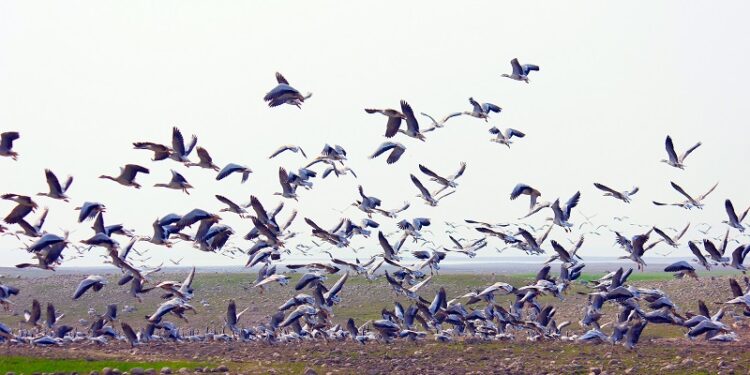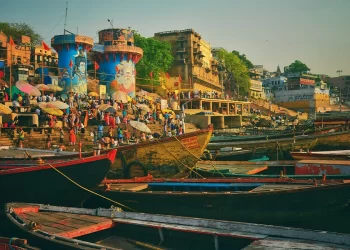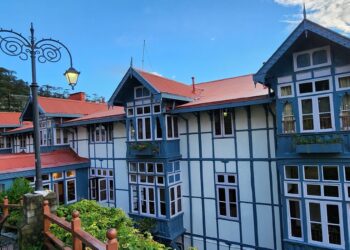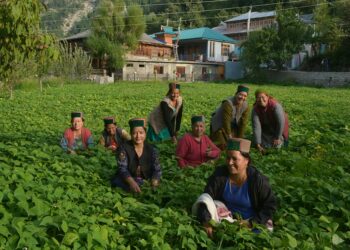 While the tourism industry of Himachal Pradesh is reeling under the immediate pressure of the COVID-19 crisis, it also provides us an opportunity to analyse facts and figures, travel trends while designing strategies to make Himachal a more resilient and powerful tourism state for the future. In the geometry of tourism destinations in India, Himachal holds a pivotal position especially in the Himalayan states.
While the tourism industry of Himachal Pradesh is reeling under the immediate pressure of the COVID-19 crisis, it also provides us an opportunity to analyse facts and figures, travel trends while designing strategies to make Himachal a more resilient and powerful tourism state for the future. In the geometry of tourism destinations in India, Himachal holds a pivotal position especially in the Himalayan states.
Tourism contributes to about 6.6% of the GDP of the state of Himachal employing over 0.7 million people directly and indirectly. Add to this the ancillary industries and the multiplier effect of tourism and it definitely becomes of the most beneficial sectors to reckon with. However, travel pre-COVID-19 had shown trends of mass movement principally towards the destinations of Manali, Shimla, Dharamshala and Dalhousie. These destinations though high in visitation had very less left for Himachal’s core asset – nature. Rampant problems of waste generation, water and energy scarcity, meagre local recruitment and conflicts with local communities surfaced as the negative outcome of mass tourism movements.
COVID-19 pandemic has altered the psyche of the tourist who will look into various parameters consciously before leaving the safety of his home environment.
With the COVID-19 pandemic going back to the old normal in tourism is not an option. Health facilities, hygiene, travel time and mode, carbon footprint of travel etc. all terms will have new meanings and interpretations. The crisis has now altered the psyche of the tourist who will look into various parameters consciously before leaving the safety of his home environment. The saying “Think Global and Act local” will now be all the more relevant as all have become local in this global problem.
Rural travel will be a trend which will fortify in Himachal. It’s also high time to emphasize programs like Community Based Tourism.
This health crisis will soon give way to an economic crisis especially in Himachal where people are dependent on tourism and horticulture. Just like climate change plays a gamble with our horticulture by making a season good or bad, so does it happen in the tourism sector. This pandemic has changed the industry forever. Nevertheless, one feels that it has also given us a time to present a new Himachal to the conscious interpretative travel. Post COVID-19, it’s time to explore, package and present a Himachal 2.0 version which has so much to offer in terms of its offbeat destinations. Rural travel will be a trend which will fortify post COVID-19 given the fact that responsible tourists will avoid bigger destinations due to social distancing.

It’s also high time to emphasize programs like Community Based Tourism (CBT) funded by the Asian Development Bank which should now be institutionalized in the tourism department as it’s high time the state invests in its offbeat location and its people. Moreover, post COVID-19 the tourism practices in Himachal should be viewed from the prism of responsible travel to Himachal’s core asset – nature and its rich culture. It’s important for the government to have short, medium and long-term strategies towards tourism growth, thereby making it more resilient and spread the benefits to the entire state instead of only in the mass tourism destinations.
In the spreading of tourism to rural destinations, it’s important to emphasize tourism as a means of supplementary or alternative income generation. Moreover, tourism tools need to be re-evaluated. A classic approach of capacity building measures of initiatives like community-based tourism can be showcased with an example of a simple fishing local boat in Pong dam to act as a birding guides (conservation tool), to fishing with tourists and doing sightseeing (income generation tool) to search and rescue during disasters.
Thus, investing in concepts like responsible travel, homestay training, small interpretative experiences like birding and cultural groups and marketing offbeat destinations should become the number one priority of the state government along with having a robust health infrastructure. Concrete Standard Operating Procedures institutionalized through rigorous certified trainings are the need of the hour whether it’s in safety, hygiene or adventure. Also, equally important is to have a common set of tourism vision within the forest, wildlife and tourism departments.
Moreover, a comprehensive body which includes members of tourism industry along with the government (both forest and tourism departments) backed by research (academia) need to synergize policies and put them into practice.

Destinations like Tirthan Valley, Barot Valley, Bir and Billing, Andretta, Spiti, Chamba, Pangi and a number of our wildlife sanctuaries, national parks and pristine valleys, have a lot to offer but should not go towards the direction of mass tourism destinations. A strong local social monitoring mechanism backed by a proactive government ensuring the triple bottom line of sustainability – Economic (profit), Environmental (planet) and Social (local people) should become the face of the new Himachal! Post COVID-19 its only through responsible travel practices that we will make a win-win for the tourism community and the state!
Ankit Sood has worked in the position of National Ecotourism Expert in JICA aided Sikkim Biodiversity Project (Govt. of Sikkim) & Ecotourism Planner & Forest Conservation Specialist with ADB funded IDIPT project with the Tourism Department of Himachal & Uttarakhand. He is also the founder member of Sunshine Himalayan Adventures a pioneering company practicing sustainable tourism since 1996!

Founded in 2016, The Traveller Trails is a print and digital magazine and a trusted source for current news, trends, analysis, opinions, interesting blogs, videos and exclusive interviews from every corner of the world.












